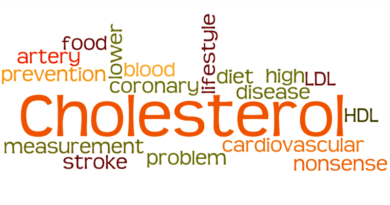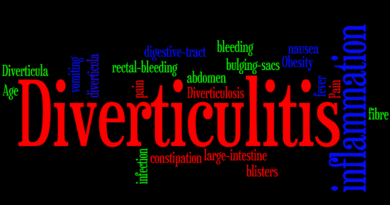SACN report: Carbohydrates & Health
Seven years!
On Friday 17th July 2015, a report was issued by the Scientific Advisory Committee on Nutrition (SACN). This report was initiated seven years ago: In 2008, the Food Standards Agency and the Department of Health asked SACN to provide clarification of the relationship between dietary carbohydrates and health and to make public health recommendations.
Terms of reference
The Terms of reference of the working group were four fold. “To review:
1) the evidence on dietary carbohydrate and colo-rectal health in adults (including colo-rectal cancer, irritable bowel syndrome, constipation) and in childhood and infancy;
2) the evidence on dietary carbohydrate and cardio-metabolic health (including cardiovascular disease, insulin resistance, glycaemic response and obesity);
3) the evidence on dietary carbohydrates and oral health;
4) the terminology, classification and definitions of types of carbohydrates in the diet.”
It would have been far better to give an independent panel (we’ll come to conflicts) a free remit on food and health and then they may have been able to spot a connection between the change in dietary guidelines (1983 UK) and the concomitant epidemics of obesity and diabetes. They may also have been able to look at recommended micro nutrient intakes and worked out that the most nutrient dense foods are not ‘healthy whole grains’.
Overall summary and conclusions
Chapter 12 has the overall summary and conclusions. You can look at the whole report yourself. I’ve extracted key conclusions on carbohydrates and the health measures that fell within the terms of reference. The summary is presented for: total carbohydrate; sugars and sugar-sweetened foods and beverages; starch and starch rich foods; and dietary fibre.
Total dietary carbohydrate
12.8 “Overall, the evidence from both prospective cohort studies and randomised controlled trials indicates that total carbohydrate intake appears to be neither detrimental nor beneficial to cardio-metabolic health and colo-rectal health.”
i.e. we spent seven years looking at evidence on carbohydrates and we can’t say that it’s harmful or helpful. That’s quite funny – unless you’re the poor sod who funded all of this. Hang on a sec – that’s me, as a UK taxpayer!
Sugars and sugars-sweetened foods and beverages
12.9 “Prospective cohort studies indicate that sugars or sugars-sweetened beverage intake is not associated with the incidence of colo-rectal cancer. There is no association between the incidence of type 2 diabetes mellitus and total or individual sugars intake, but a greater risk is associated with a higher intake of sugars-sweetened beverages. There is insufficient evidence to enable conclusions to be drawn in relation to cardiovascular disease endpoints.”
i.e. observational studies clear sugar of all charges except that sugary drinks are associated with type 2 diabetes.
12.10 “Trials examining cardiovascular risk factors, inflammatory markers and risk factors for type 2 diabetes mellitus demonstrate no effects of increasing sugars intake. There is also insufficient evidence to assess the link between individual sugars and sugars-sweetened foods and beverages and cardiometabolic outcomes.”
i.e. what trial evidence we looked at clears sugar of all charges.
12.12 “Overall, there were very few studies on individual sugars, such as glucose, fructose or sucrose, which met the inclusion criteria for this report. Prospective cohort studies indicate that higher consumption of sugars and sugars-containing foods and beverages is associated with a greater risk of dental caries.”
i.e. there isn’t much evidence on sugar (that’s because research is funded where it can benefit the funder; the government should fund research into the health effects of sugar, but it doesn’t. It funds seven year coffee meetings instead!) The worst we can find is that sugar is bad for teeth. The latter was firmly established in the 1983 National Advisory Committee on Nutritional Education (NACNE) report, so there’s nothing new here.
Starch and starch-rich foods
12.13 “Prospective cohort studies indicate no association between starch and refined grain intake and cardiovascular disease endpoints and type 2 diabetes mellitus. There is a lack of evidence relating colo-rectal cancer and oral health to starch and starch-rich foods intake. There is insufficient evidence to draw a conclusion on the association between starch intake and weight gain.”
i.e. starch and even refined grains are also cleared of all charges. We don’t have evidence for starch and weight gain, so we have to let starch off for that one as well.
Dietary fibre
12.15 “Prospective cohort studies indicate that a diet rich in dietary fibre is associated with a lower incidence of cardiovascular diseases, coronary events, type 2 diabetes mellitus and colo-rectal cancer.“
i.e. we’ve seen an association between fibre intake and lower incidence of the conditions we were asked to look at. However, cohort studies can only suggest association – Randomised Controlled Trials are needed to show causation. And…
12.16 “Randomised controlled trials indicate no effect of (total, mixed) dietary fibre intake on cardiovascular or type 2 diabetes mellitus risk factors considered in this report.”
i.e. … proper intervention trials showed nothing. Zippo. Zilch.
12.19 “Overall, randomised controlled trials in adults indicate that supplementation with non-digestible oligosaccharides improved blood lipid concentrations, increased faecal mass and bacterial content. Resistant starch supplementation increased faecal mass and short chain fatty acid content. Polydextrose and polyol supplementation increased faecal mass.”
i.e. giving adults things that they can’t digest generates lots of poo.
Key Recommendations
I’ve not listed all recommendations. Because the fourth term of reference was about terminology and classification, some of the recommendations are about terminology and classification and this is pretty dull.
S.16 “It is recommended that the dietary reference value for total carbohydrate should be maintained at an average population intake of approximately 50% of total dietary energy.”
i.e. despite the fact that even an active person only needs c. 25% of their intake in the form of energy and that this can come from carbohydrate OR fat, we recommend that everyone has half their intake in the form of the only macronutrient for which we have zero requirement: carbohydrate.
S.18 “It is recommended that the average population intake of free sugars (Defined at end – Ref 1) should not exceed 5% of total dietary energy for age groups from 2 years upwards.”
i.e. people should have no more than 5% of their dietary intake in the form of sugar but, because all carbohydrates are, or break down into, sugar they should have 50% of their dietary intake in the form of sugar (S.16).
S.22 “It is recommended that the dietary reference value for the average population intake of dietary fibre for adults should be 30g/day.”
i.e. there is no evidence for the current recommendation of 18g/day but we will increase this substantially to another number for which there is no evidence: 30g/day. (There is big love for fibre emanating from this 384 page document – the word “fibre” appears 717 times. They clearly haven’t read “Fiber Menace”).
S.23 “It is recommended that the average population intake of dietary fibre for children aged 2 to 5 years should approximate 15g/day, for children aged 5 to 11 years 20g/day, for children aged 11 to 16 years 25 g/day and for adolescents aged 16 to 18 years about 30g/day.”
i.e. we’ve made up numbers for adults so why not make them up for children and teenagers too. Good luck parents with your little darlings literally full of cr@p.
Background on health outcomes (disease prevention)
Chapter 4 shares the headlines of what the committee (in various forms – people came and left over seven years) learned about each of the conditions they were asked to look at:
Cardiovascular disease
4.3 notes that atherosclerosis is influenced by elevated blood glucose. And what elevates blood glucose? Try carbohydrates.
Obesity
4.5 shows the belief system held by the committee about obesity – not the insulin/hormone model of the thinkers in this field, but the classic greed and sloth model: “Obesity occurs when energy intake from food and drink consumption is greater than energy expenditure through the body’s metabolism and physical activity over a prolonged period, resulting in the accumulation of excess body fat.”
Type 2 diabetes
4.7 “It is important to identify which dietary aspects improve glycaemia, insulinaemia and insulin resistance in individuals with normal or moderately compromised glycaemic control to further elucidate the role of diet in the prevention of type 2 diabetes mellitus.”
It is important to identify!? I thought that was the committee’s job? I think you’ll find: dietary fat has no impact on blood glucose or insulin; protein has no impact on blood glucose and carbohydrate wrecks havoc with both blood glucose and insulin.
Colo-rectal health
The learnings here were presented in seven sections (4.8-4.14) – not one of which mentioned carbohydrate or sugar. Fibre was mentioned only once – in the context of “an intake of about 25g/day dietary fibre” will help defecation.
Oral health
About the worst they could say was (4.16) “Sugars in the diet exert an effect after eruption when the teeth are exposed to the oral environment.” Whatever that means.
Conflicts:
The conflicts of interest among panel members long preceded this report. Channel 4 ran a programme on the 20th January 2014 highlighting the food industry funding received by “the chief scientist looking at the sugar question” – Professor Ian MacDonald of Nottingham University. Channel 4 Dispatches discovered that since 2012 he had resumed working for two food and drink giants: sitting on two advisory boards for Coca Cola and one for Mars. As the programme released noted: “He also receives funding from Unilever which is the world’s largest ice-cream manufacturer.”
Hannah Sutter did a fuller expose of other committee members here. Notice Jordan cereal – they’ll love the fibre love-in. Mars and Coca-Cola will be really happy that sugar has largely been exonerated and Sainsbury’s will be happy that 80% of the current aisles have been given a health tick.
You’ll have to search hard for the declared conflicts. I asked Public Health England and was directed to the annual report. Check out Annex 5.
The SACN report has a preface by Dr Ann Prentice, Chair of the Scientific Advisory Committee on Nutrition. Here are her declared interests. I’ve highlighted a few:
Action Medical Research; Aarhus University Hospital; Aquapharm; Arch Timber Protection; Boden Institute for Obesity; British Dietetic Assoc; BUPA Treasury; Cambridge University Hospitals; Christie NHS Foundation Trust; Coca Cola; Cranfield University; Danish Brewers’ Association; Diabetes UK; Electro Sci. Industries; European Molecular Biology Laboratory; HS Pharma; Institute of Brewing and Distilling; Ikon Informatics; Iron Therapeutics Switzerland AG; Kellogg Company; King’s College Hospital LLR-G5 Limited; National Safety Assoc; National Centre for Social Research; Nestle; Playerthree; Shield Holding AG; Thermo Fisher Scientific; Weight Watchers Int; World Cancer Research Fund; The Rank Prize Funds; Thrombosis Research Institute; UCL Consultants; Universitat Rovira; Weight Watchers; York Teaching Hospital NHS Foundation Trust; pSiMedica.
(I find myself wondering if any of those make toilet paper!)
Closing view:
My first and lasting thought is – why did this take seven years and 384 pages? It takes fewer than seven seconds and three words to issue sound dietary advice: “Eat real food!” (“All-bran doesn’t count”, may be helpful in the circumstances).
My other key points are:
1) All carbohydrates are, or break down into, sugar. The report is littered with the words monosaccharides (saccharide meaning sugar), disaccharides (sugar), polysaccharides (sugar), fructose (sugar), glucose (sugar), maltose (sugar) … They must know that they are talking about sugars all the time – just sugars in different forms. Yet, the key recommendations can be summarised as “eat less sugar and eat more sugar.” I just don’t get it.
2) There is no evidence for any of these recommendations:
– 50% of the diet in the form of carbohydrate sugars – why? Why not 5%? Why not 95%?
– 5% of the diet in the form of free sugars – why? Why not 10%? Why any?
– 18g of fibre had no evidence; 30g has no evidence. Why 30? Why not 10? Why not 50? Why not just tell people to eat food for the micronutrients they need and then fibre won’t get a look in?
3) The sugar industry could barely have dreamed of such a favourable report, but then when your chair of the SACN and your chair of the SACN carbohydrate working group are/have been funded by Coca-Cola and Nestle and Coca-Cola and Mars respectively, the sugar industry should never have been that worried.
Ref 1: S.17 gives the definition of free sugars as: “It is recommended that the definition for ‘free sugars’ be adopted in the UK. This comprises all monosaccharides and disaccharides added to foods by the manufacturer, cook or consumer, plus sugars naturally present in honey, syrups and unsweetened fruit juices. Under this definition lactose when naturally present in milk and milk products is excluded.”



